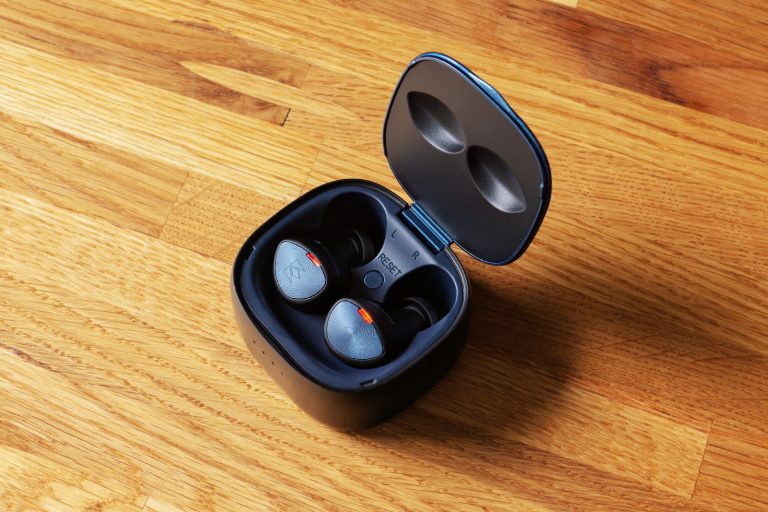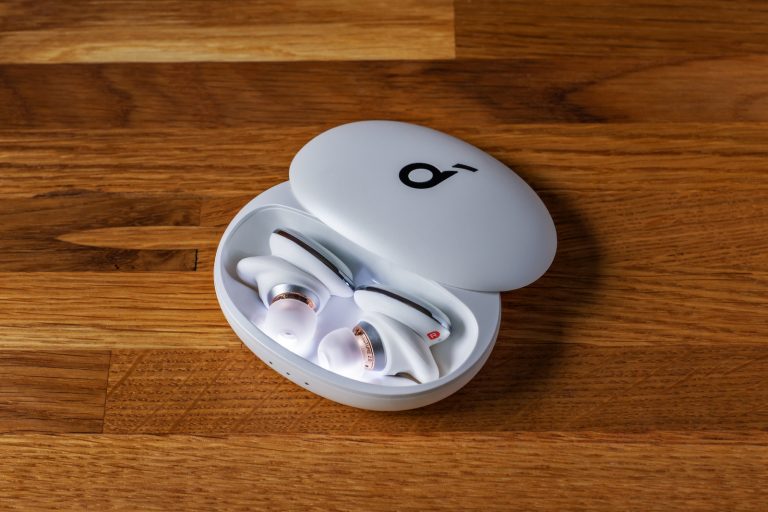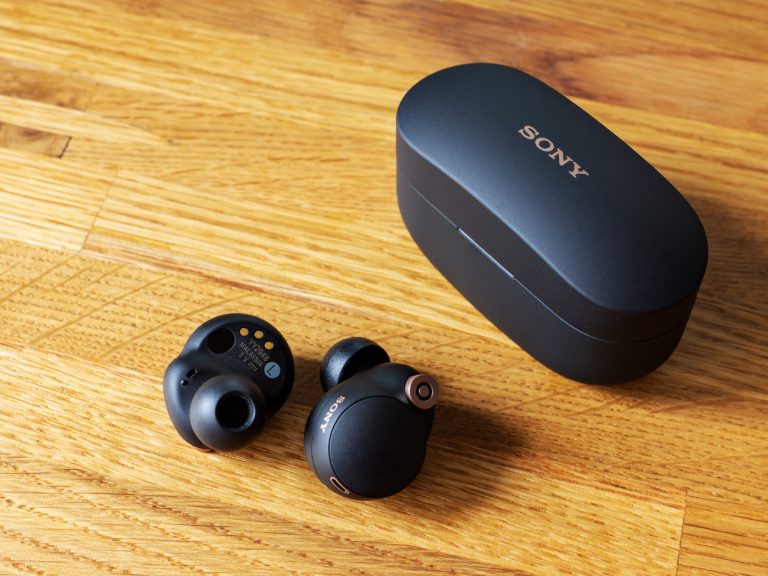Sony Linkbuds S review. The story of one mistake
Market analysts can make mistakes, it’s true. They mostly do it when they try to sell us something already existing but very slightly modified as a revolutionary product. Next generation stuff! A breakthrough piece of crap! And all that ‘cutting-edge’, ‘unleashed’, brand new experience’ nonsense, you know. Or when they just want everyone to fall for a completely audiophile model. But sometimes the analyst goes to the other extreme by totally underestimating the product and thus setting a completely inadequate price. I mean, lower than it should be.
It’s very rare, but it happens. And this is exactly the case of the Sony Linkbuds S TWS headphones (hereinafter: LS).
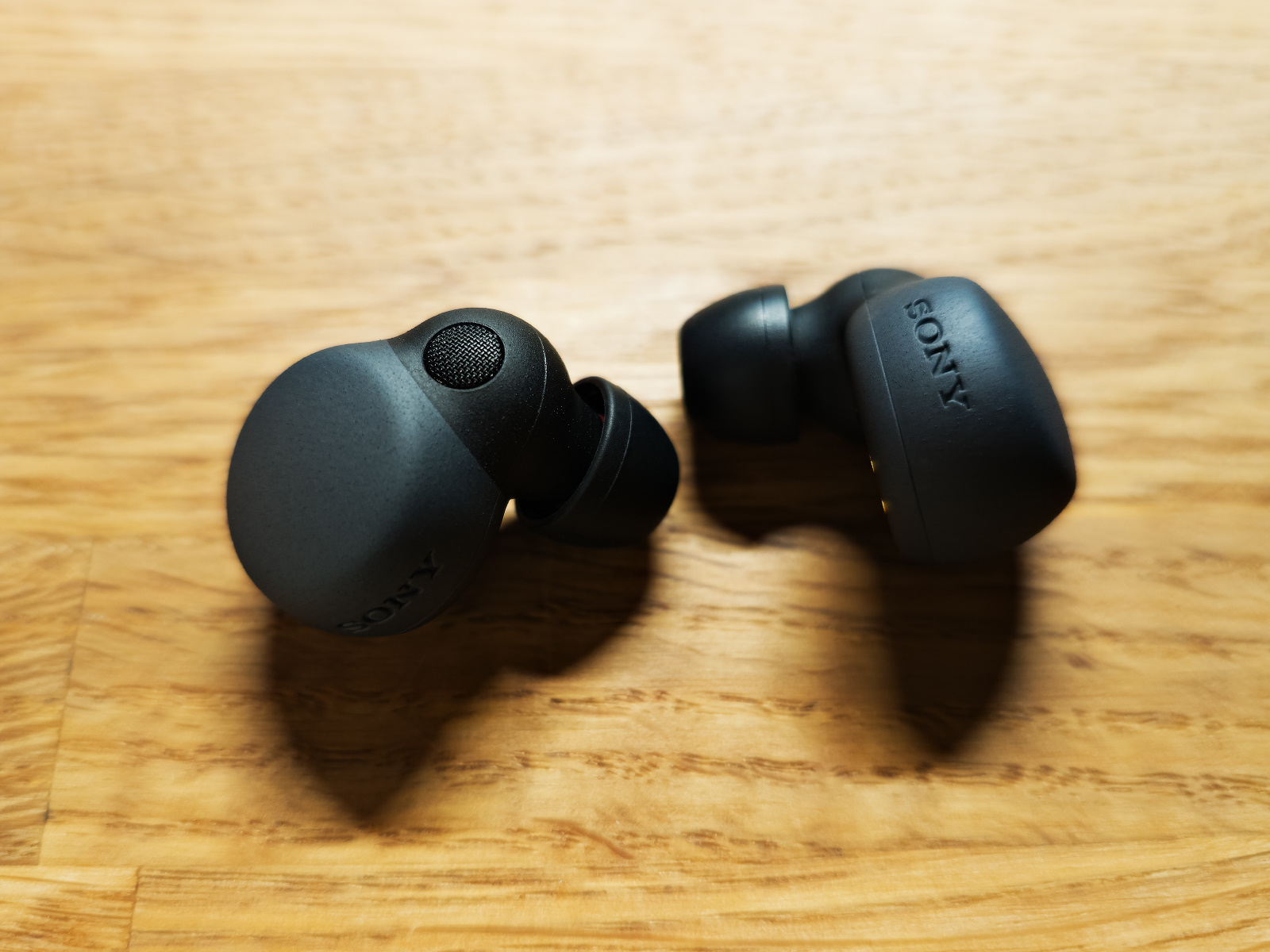
Why such a name?
As of March 2023, the Linkbuds series only includes 2 models:
- the Sony Linkbuds – those weirdest TWS with holes in them that you’ve probably heard about, but never seen with you own eyes;
- the Sony Linkbuds S, which are the main character of this story; these are the perfectly classic in-ear headphones.
The Linkbuds S and no-S are ideologically and technologically two completely different devices. They’re different both in sounding and in usage scenarios. One can only guess why Sony put them in the same range.
The Linkbuds S should probably be WF-1000xm3½ instead, since ideologically these are certainly closer to the WF-1000XM series, I think. This is why you’ll see quite a few parallels I draw between these and the WF-1000xm4.
What’s included
The headphones come in a wee cardboard box, and this is what else that wee box has inside:
- 3 pairs of removable eartips (that makes 4 pairs in total with those already put on the headphones);
- a short USB Type-C cable;
- some papers.
Software/smart functions
These headphones can do all the tricks a decent pair of TWS headphones should be able to do in 2023.
- Active noise reduction. See more about it below.
- Acoustic transparency mode. With an adjustable level, by the way, as well as the ability to pull voices out of the general external background.
- ‘Talk-to-hear’ mode. It’s when you’re listening to your music and minding your business, but once you say something, the acoustic transparency mode turns on and the music stops automatically. It’s actually a very convenient thing, especially during warm hat seasons: it allows you to stop by a coffee shop and order some fancy pumpkin spice matcha flat white whatever without taking the headphones out of your ears. You don’t even have to take off your gloves!
- Multipoint connectivity. That is, these can be connected to two devices at the same time. You don’t need to switch the source from smartphone (while commuting) to laptop (when you’re finally at your office) to dive into the conference call immediately. Seamless!
- Auto-pause when removing the headphones. It’s just it.
- Equalizer. 5 bands + bass control, 3 custom presets, as well as 10 preset settings.
And a whole lot of other bells and whistles, such as the algorithm to determine whether you chose the right eartips, the DSEE Extreme sound ‘improver’, the ability to automatically change headphone settings depending on certain external conditions, the voice assistant, the Spotify and Endel (whatever it is) integration, the earshape analysis for subsequent 360 Reality Audio use, etc.
Design, build quality, comfort level
The build quality is excellent, and I’d separately praise the LS plastic enclosure texture. It’s somewhat sandpapery, and thanks to it it’s exceptionally difficult to actually drop an earpiece when taking it out of its case.

The LS are certainly smaller than the WF-1000xm4,
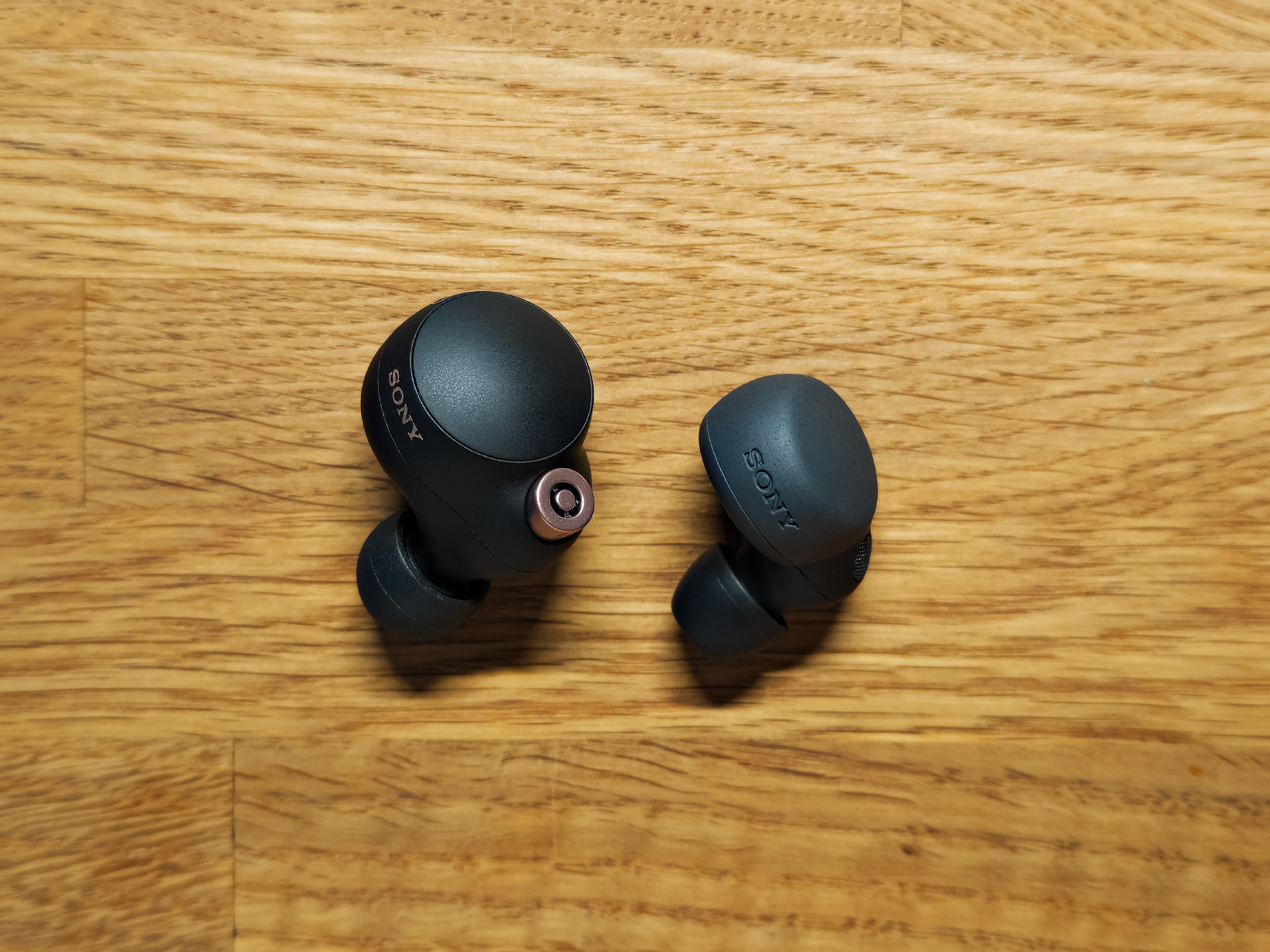
and this is where a smaller case size derives from.
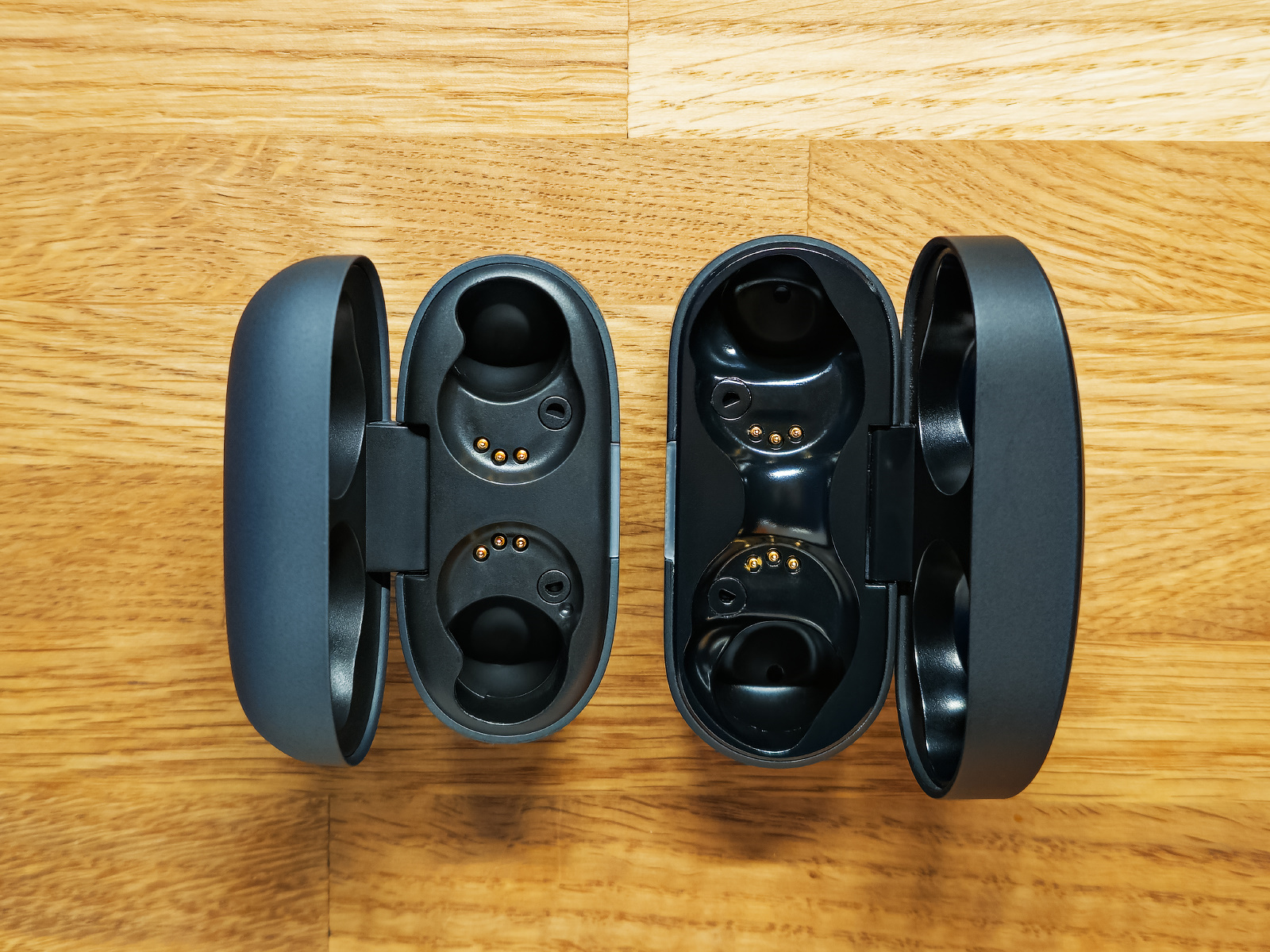
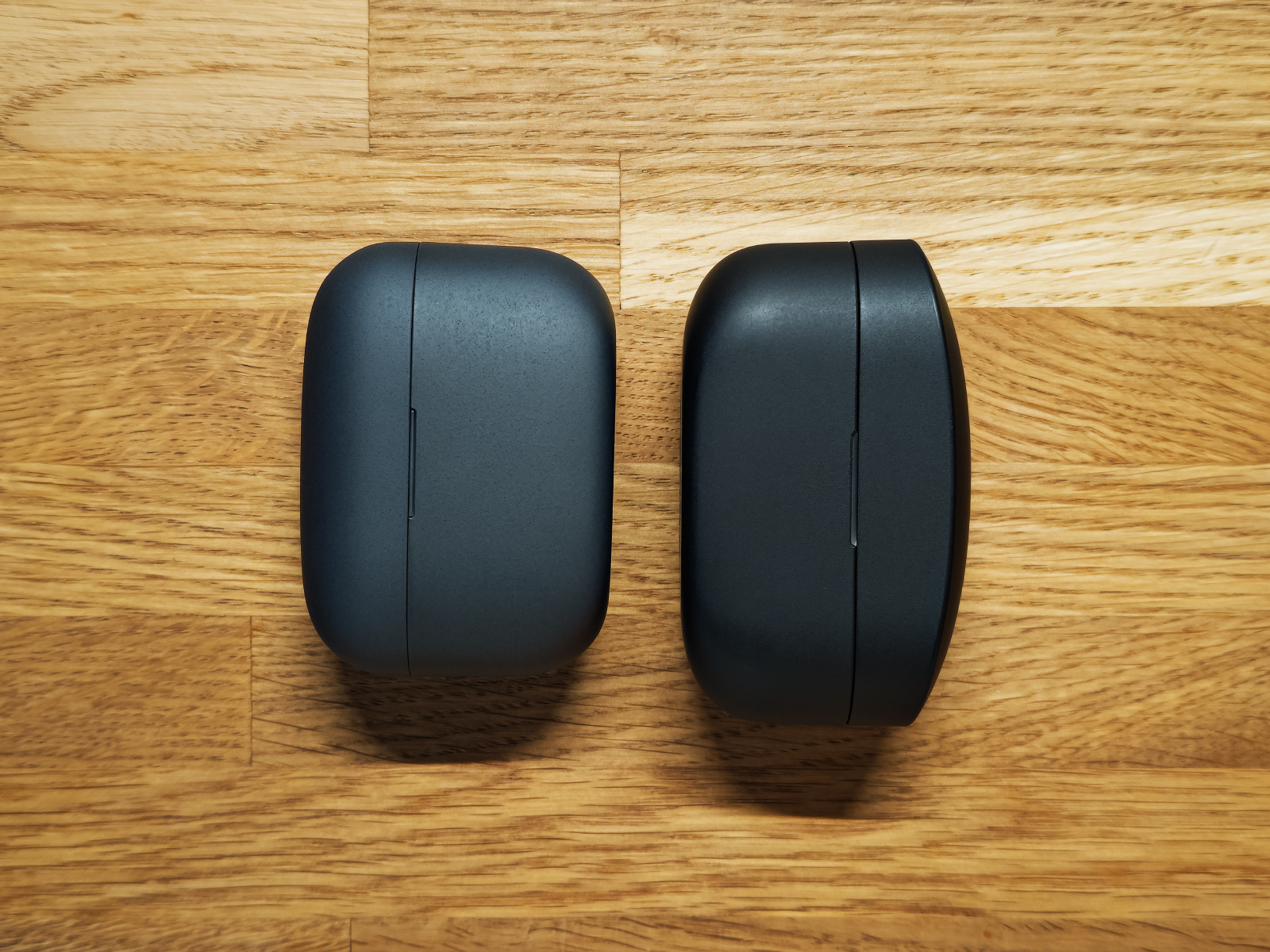
There are no decorations on the case’s outer surface, the headphones are almost invisible when in use and don’t stick out of your ear. You could sleep with them inside. I mean, you can sleep on your side, how’s that! The inside holds a contact pad for charging and a proximity sensor. The left/right headphones are also there.
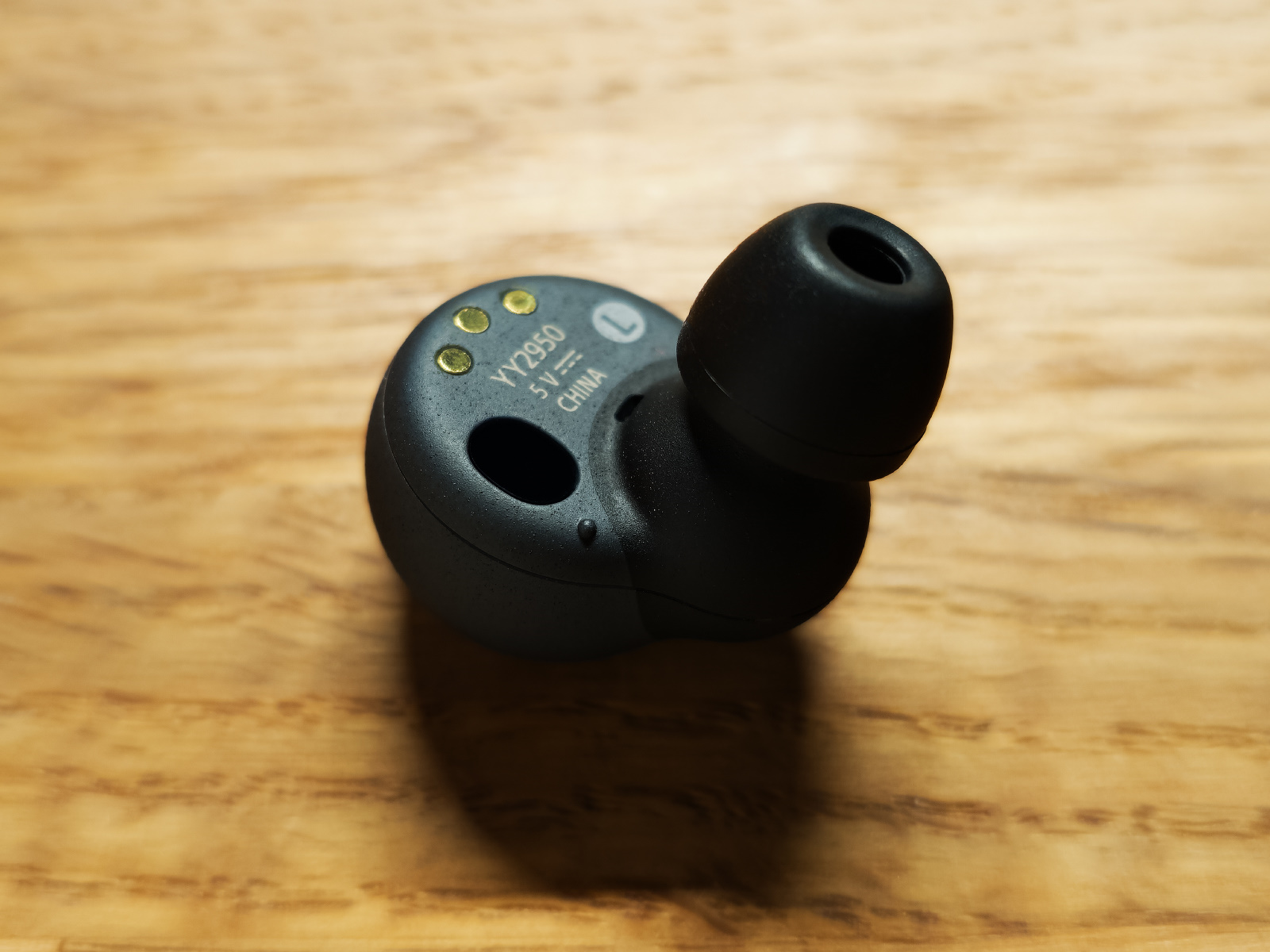
As you might have guessed, the headphones are perfectly comfortable to use: they fit into any ears, stay in any ears, and all the smart doo-dads just work as intended. Actually, the WF-1000xm4 do that all, too.
The standard Sony Headphones Connect app has the same set of options as for the WF-1000XM4 but with customization of control gestures. The headphones capture the source device without failure as soon as they’re removed from their case and never lose hold of it when in use.
The noise reduction is basically at the same level as in all the WF-1000XM models, that is, it’s the best or almost the best on the market.
It’s worth noting separately that the mics here are quite surprisingly good. I’d say these are the best mics in TWS headphones I’ve ever tried… in a low-noise environment, but still. When it comes to loud street noises, they’re just averagely lame microphones, that’s it. Getting back to some more or less quiet home or office environment, the LS mics deliver excellent speech quality: not only it sounds intelligibly, but it also can be analysed in the sense of frequencies! And this is the side of the LS where they’re basically the best choice for work meetings, especially since they connect exceptionally to laptops (at least to Windows 10/11 machines).
Technical specs
- Design: in-ear closed-back.
- Drivers: one 5-mm dynamic driver.
- Weight of a single earpiece: 4,8 grams.
- Weight of the case with the headphones inside: 35 grams.
- Bluetooth version: 5.2.
- Dust and moisture protection: IPX4.
- Audio transmission protocols: SBC, AAC, LDAC, LC3.
- Battery time: 6 hours with active noise reduction enabled.
- Case charging time: 3 hours.
Subjective sound impression
I’ve been testing these headphones for about 80 hours with Galaxy S23 Ultra (LDAC) and Galaxy S22 (LDAC) smartphones as the sound sources.
No background hiss spotted, and the maximum volume level isn’t the loudest but still good enough to call it ‘very loud’.
After like 3 minutes of testing I was like ‘Daaaaamn! Sony, are you guys serious?’. Because the LS sound great. It’s a little tense around the very top of the upper frequencies, but otherwise it’s just fine. And I’ve spent about 3 hours straight testing them, refusing to believe my ears and playing tons of tracks trying to find at least something to bitch about.
The headphones feature quite an energetic sound delivery, but only in terms of highlighted subbass. This is actually the rarest case when the subbass of some TWS headphones can be pointed out as ‘fast’ and ‘collected’. The middle frequencies are here, too, and aren’t too low. The upper section of the frequency range is uniformly ‘suppressed’, but it’s even, so it’s a good thing! The overhangs of the ultra-high section of the range at around 13 kHz can be barely heard or not heard at all, but then, up to the audibility threshold, the headphones reproduce the recording pretty accurately. As a result, the LS sounds thrilling, powerful, but at the same time very real and comprehensive when it comes to sound nuances over the entire frequency range. Awesome setup, you know! And it can be improved even a little more. I’ll show you below.
The sound stage is a bit narrow, and the ‘it sounds in my head’ impression is here, hard to deny. However, not any music would demonstrate it. Talking about modern popular (I mean, not exactly pop, but just popular) music, that part around the 13 kHz isn’t exactly full of details, and seems that such a lack of saturation spoils the overall impression of sound volume.
Subjectively, I would prefer the LS to any other headphones currently on the market, regardless of their price. However, I haven’t tried, for example, the FiiO WF5, and I’d love to try them SO HARD. #FiiO, send me your #WF5 to review, #pleasepleaseplease! Comparing the LS with Sony WF-1000XM4, Soundcore Liberty Pro 3 or Samsung Galaxy Buds2 Pro, I’d definitely choose Linkbuds S, since the sound tuning is a piece of cake glazed with awesomeness. That is, be it with the default setup or after equalization – freaking great sound.
Measurements before equalization
The headphones were connected to a Galaxy S23 Ultra (LDAC) smartphone. A measuring rig conforms to the IEC60318-4 standard. For each of the earpieces, the measurements were made until 3 to 5 reliable and stable measurements were obtained for the left and right channels; any deviant measurement results were excluded. The smoothing is indicated on the graphs. I’ve described the limitations of the rig and the headphones measurements in general in this article.
The Sony Linkbuds S frequency response without equalization, please:
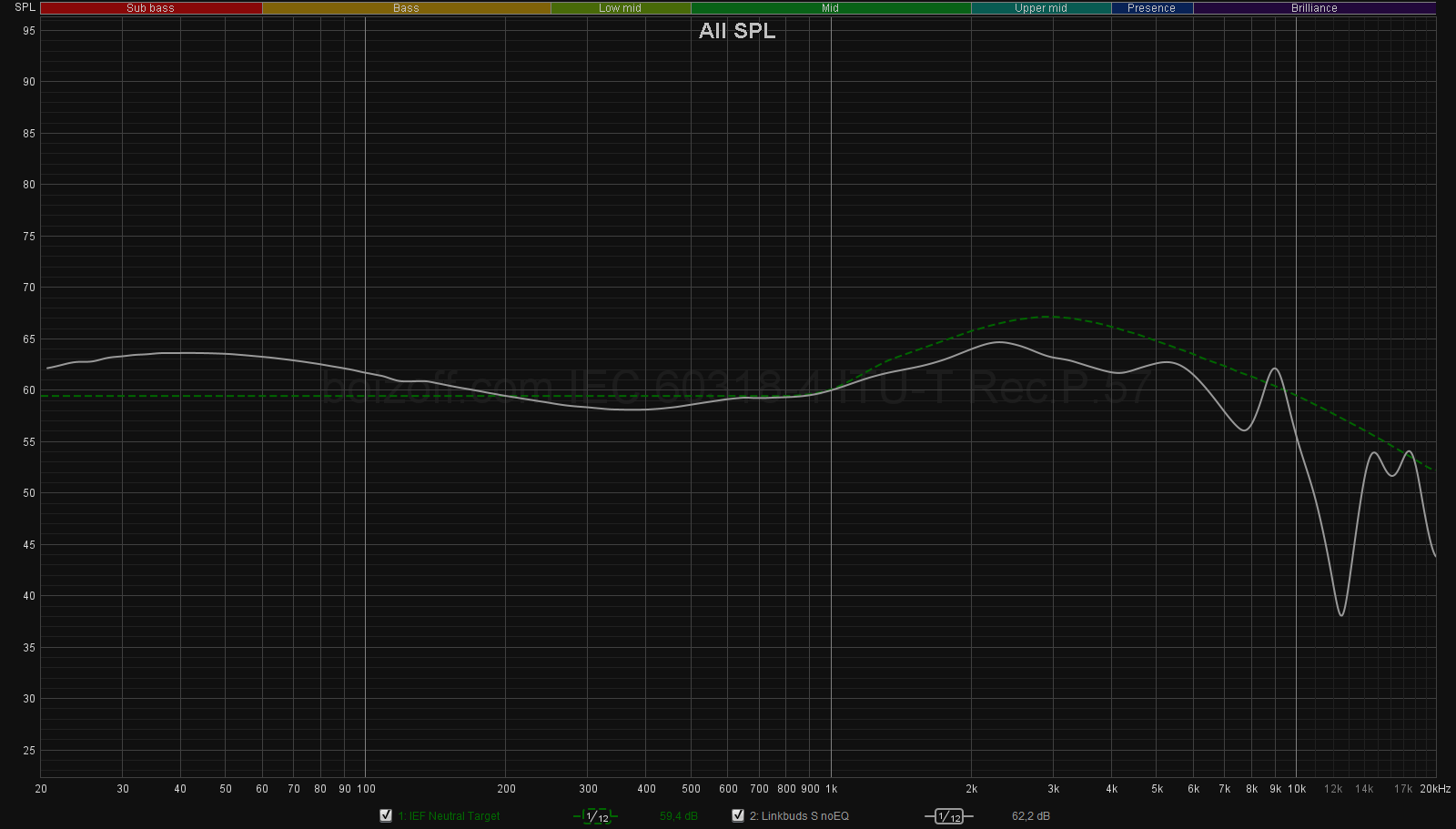
Some raised subbass, an absolutely comprehensive middle range section and a pretty shameful dip around the 12 kHz, which is exactly the reason why the sound stage seems that narrow.
Measurements after equalization
You can adjust the sounding to the better – don’t expect some radical changes, though, it’s just a significant improvement. To do so, use the following equalizer setting in the proprietary app:
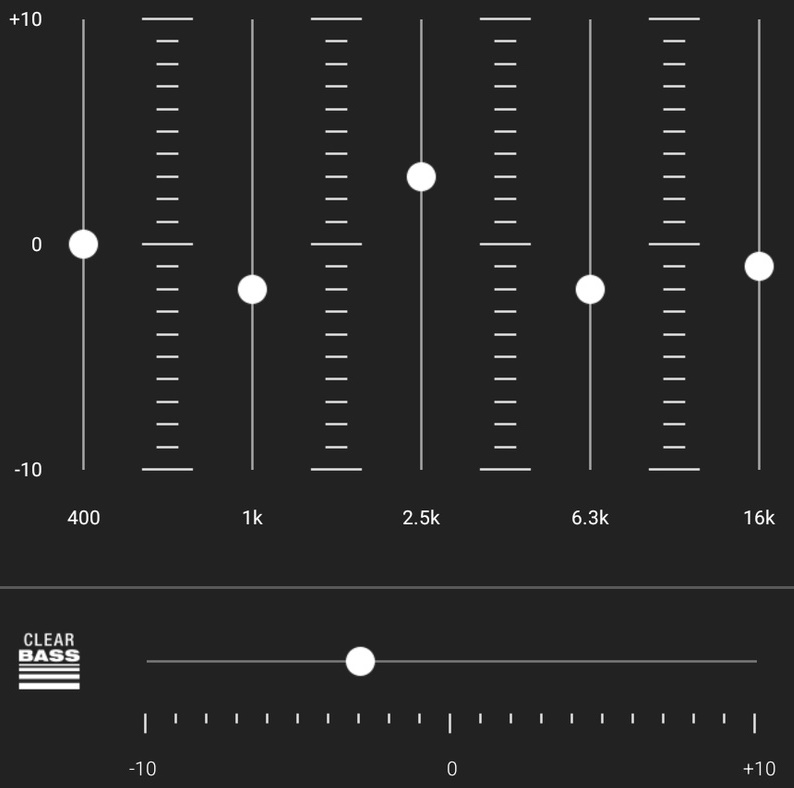
The frequency response would look like this:
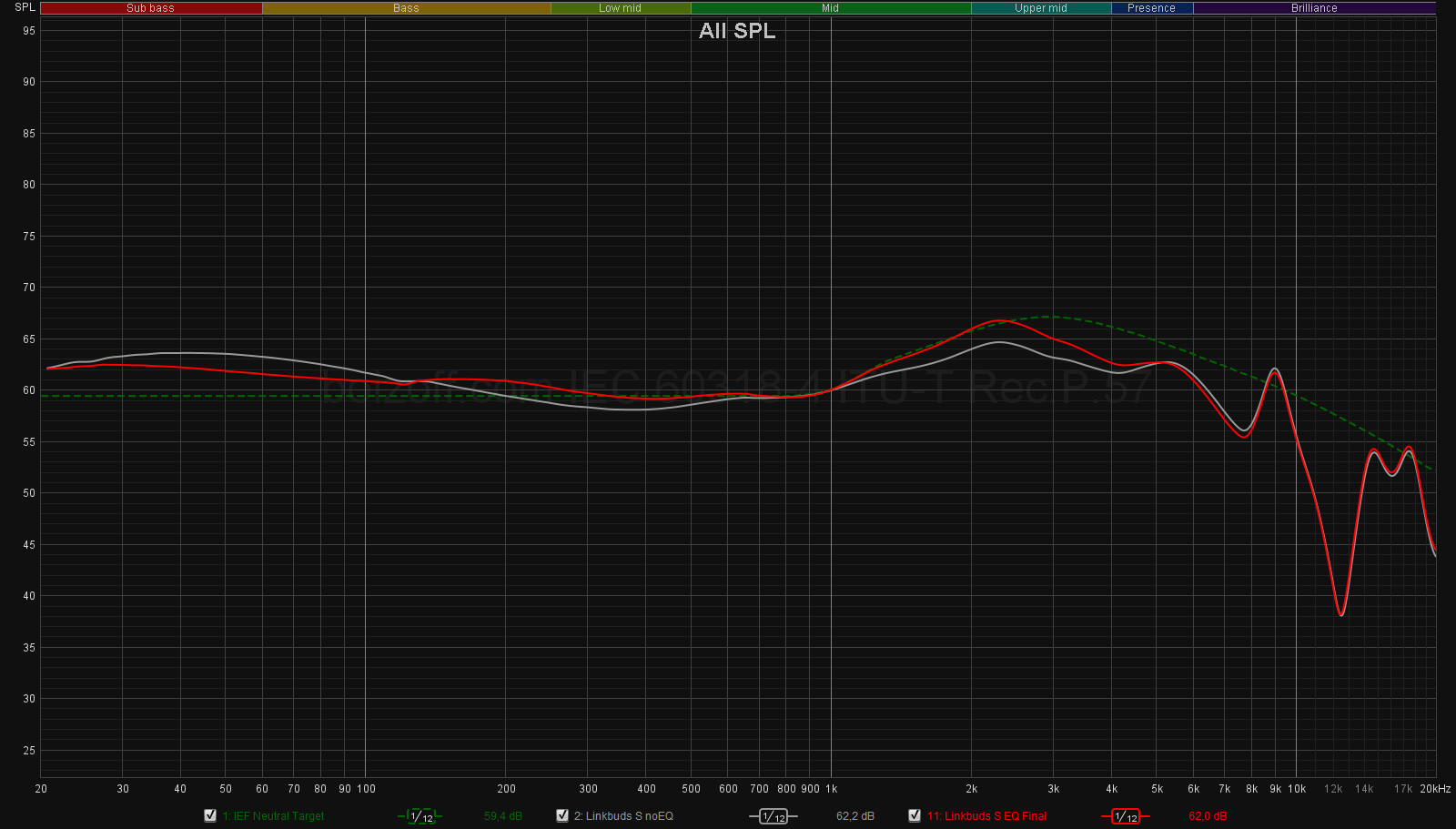
The 20–1000 Hz section becomes dramatically smoother, although we just can’t erase a slight rise on the subbass side completely. And this is not exactly a bad thing – it’s actually a good and right thing! It all will be gone with the street noises kicking in. The 1–2.5 kHz segment is just perfect! Look at it! Then, up to 10 kHz the curve is lowered by 1–3 dB compared to what a conventional ‘neutral’ curve would look like, and this prevents any sibilants to show up without masking any track details.
Unfortunately, the dip at the 12 kHz is still here. You’d probably suggest somehow balancing it by shoving your earpieces a bit deeper inside your head? Or, in this case, inside the rig’s auditory channel.

Tried that trick, didn’t work.
Comparison with Sony WF-1000XM4
Let’s conclude the LS VS the WF-1000XM4 sound comparison with some measurements before equalization:
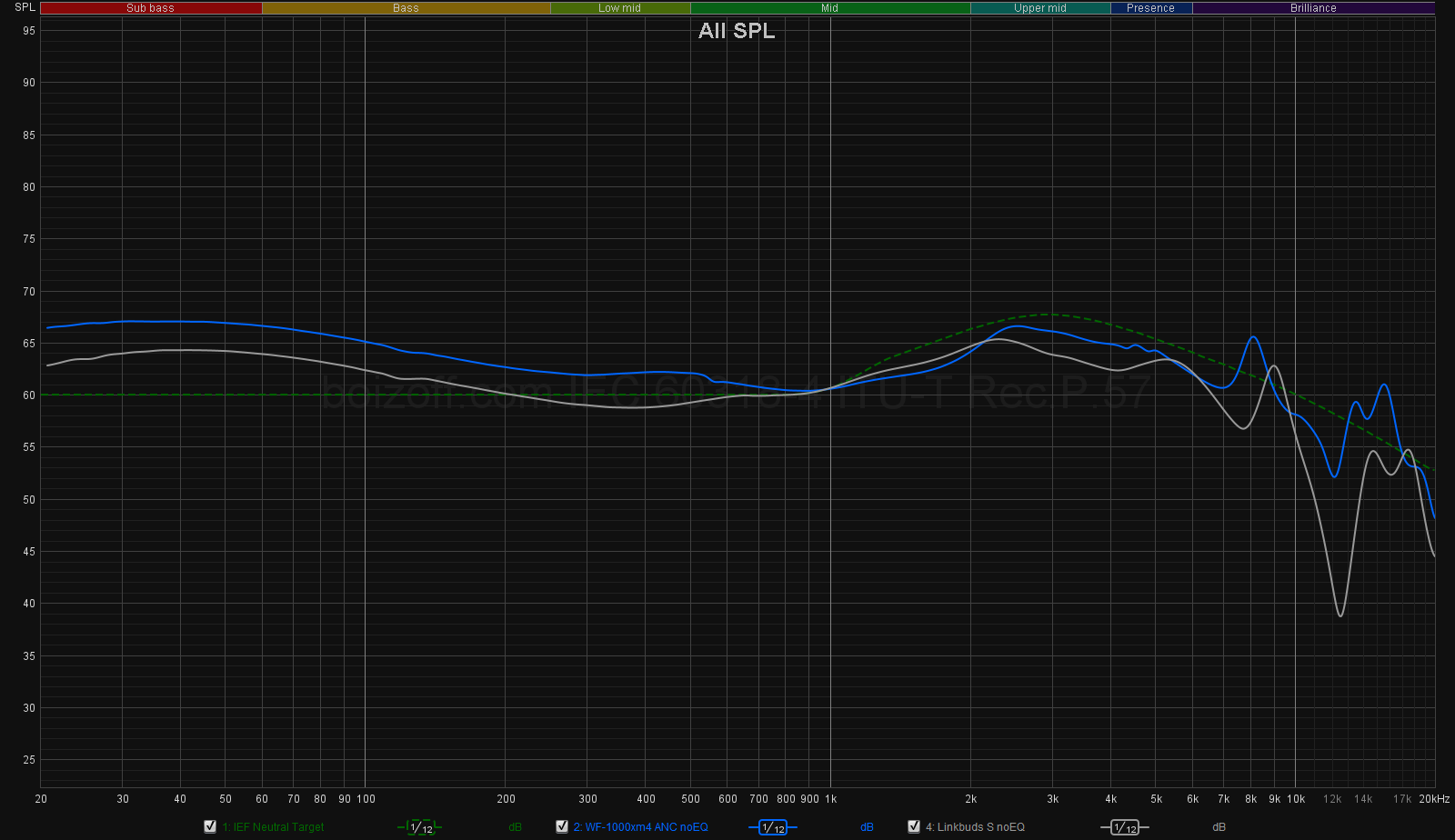
The WF-1000XM4 certainly sport a more of a V-shaped sound vibe, and the LS are kinda smoother. The dip at the 12 kHz is present on both curves, but it’s a lot deeper in the LS.
Measurements after equalization:

These are somewhere close to each other, except for, again, the 12 kHz area – it looks better in the WF-1000XM4, but the LS wear it better at around 1-2 kHz.
Summary
The Sony Linkbuds S are the best TWS headphones currently on the market across all their features and capabilities.
Yep, I really mean it.
For just $158 (min price as of 03/15/2023), the happy users enjoy some really great sound (with a perspective to improve it even further via equalization), LDAC and LC3 support, fantastically versatile ergonomics, extensive range of functionalities, excellent noise reduction, dust and moisture protection, majestic mics. The headphones feature all you can think of. I’d wreck a ship and cast away on a desert island with those in my pocket! I’d… I don’t know, ‘I would trust the LS with my life’ (C). What the LS don’t feature are wireless case charging and NFC. But f*ck it.
Sony seem to understand this too: the WF-1000XM4 were all over the media long before their release, but the Linkbuds S were released, let’s say, without fanfare. Like, ‘There’s another model we did, but please don’t mind us, we’ll just leave it here, alright?’ To be honest, I don’t even see why you would need the WF-1000XM4 when you can buy the LS, since the latter are clearly more preferable in terms of sound, ergonomics versatility. Would you add some $25 to $80 to your receipt just to have an elite opportunity to wirelessly charge the case and to do stuff with NFC? I wouldn’t.
The whole marketing promotion of the LS is really confusing, since the LS are hands down the best (THE BESTEST) headphones for music listening, the best headphones in terms of active noise reduction, but also great for gym and work meetings.
Checkmate, WF-1000XM4.
So to buy or not to buy? Aren’t you on the way to your local store or typing the online-marketplace address? Damn, do it right now.
P.S. The only category of users I wouldn’t recommend the LS for are gamers. These don’t support the AptxLL, and the 86-ms delay (according to Rtings) is inexcusable for sure. But just so you know: for me, mobile gaming isn’t something you’d call a significant, important or just separate industry. Sorry, not sorry. Go grab the LS and be happy.

